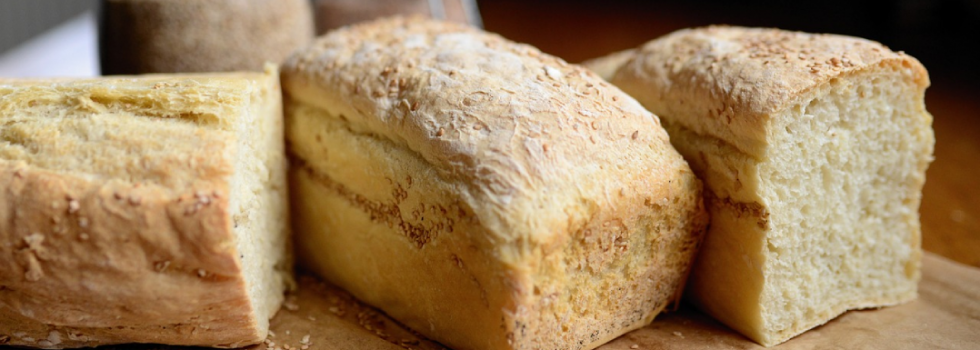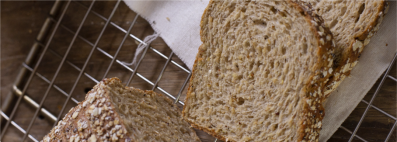Promotional Features
Fresh is best: How fermentation efficiency can improve shelf life
Once bread has been baked and cooled the ageing process begins.
As bread starts to age, it loses moisture and dries out, decreases in flavour and becomes stale. Characteristics of aged or stale bread include hardening, loose and falling crumbs when slicing and a rougher, dryer mouthfeel and taste. All these factors shorten shelf life.
The ageing of freshly baked bread is the result of complex chemical and physical processes that involves staling, together with microbiological, chemical and sensorial spoilage. There are many factors which cause bread to age and these can be attributed to the product’s chemical makeup. In bread production, fermentation causes yeast and bacteria to convert the sugar and starches. This results in the breakdown of carbohydrates into alcohols, such as ethanol and carbon dioxide gas, in an anaerobic biological process which causes discolouration (browning) and an increase in volume – the characteristic ‘rise’ of bread.
After cooling, and over time, the starch molecules in bread start to reform (recrystallize) and harden, in a process known as starch retrogradation. As this happens, the moisture absorbed during baking gradually evaporates, resulting in an increasingly drier and tougher texture which allows loose crumbs to break away when the bread is sliced or pulled apart. Because of these factors and processes, bread typically does not have a long shelf life.
However, maintaining optimal freshness of bread is a key consideration for industrial bakers, particularly for products that are designed to have a long shelf life.
Types of breads
Bread comes in all shapes and sizes, with varying ratios of fat, flour, salt, yeast and water, among other ingredients, as well as various baking means and timings. Such ratios and variations will determine the shape, texture and taste of the finished product.
For all types of breads, however, while ageing cannot be eliminated entirely, bakers can employ various means to delay spoilage, maintain appearance and extend shelf life. Packaging can play a part in preventing bread and other baked goods from becoming hard and dry and countering the growth of mould, and losing their aromas as they age. However, controlling the raw ingredients in bread is the most effective way to manage spoilage and by utilising a combination of compatible bread improvers, manufacturers can decelerate the ageing process and successfully optimise shelf life.
Yeast is an important element to counteract ageing; as an ingredient in bread improvers, not only does it increase the volume and improves texture, but also contains some anti-ageing agents. Resistance to a high content of sugar, oil and preservatives are also important factors that need to be considered in the production technology and selection of raw materials for bread.
Controlling the raw ingredients in bread
Angel Industrial Instant Dry Yeast Premium High Sugar is a strain of baker’s yeast, specifically designed to be able to tolerate high amounts of sugar in recipes. In an effort to extend shelf life of bread, industrial bakers opt to incorporate preservatives such as calcium propionate. While these additives do increase the bread’s longevity, they can also impact the yeast’s activity, resulting in longer fermentation times.
In response, Angel Yeast’s Premium High Sugar enhances the tolerance of preservatives, effectively mitigating the impact of fermentation. Compared to Ordinary high sugar variants, it reduces fermentation time by 15-20%. In addition to this, the fermentation time of Premium High Sugar can be reduced by 20% when used with ice.
Angel Yeast also manufactures Angel Super Soft Bread Improver. Applicable to all bread types that require a prolonged shelf life, improvers can be added without altering recipes or processing methods and can be used in conjunction with other enhancers. Angel Yeast’s improver contains multiple bio-enzymes which help to make bread soft and elasticated in texture, and also prolong shelf life.
Because moisture retention is vital for softness, Angel Yeast’s improver contains emulsifiers and enzymes which strengthen the bread’s protein structure and counteract shrinkage during cooling, preserving internal moisture and enhancing freshness. The enzymes in the improver also induce lasting changes in amylose structure, curbing the staling and ageing tendencies and maintaining long-term softness.
In addition, Angel Fresh Yeast is formulated to maintain strong enzymatic activity, ensuring reliable and consistent fermentation processes. It is designed to sustain fermentation over time while maintaining a pleasant flavour post-fermentation. This strain of yeast is particularly suitable for recipes with sugar content of 5% or higher, finding applications in various bread types, steamed breads, and fermentation pastries.
As the market continues to evolve and grow, industrial bakers can optimise the shelf life of bread with convenient, effective solutions that deliver stable and quality results.




